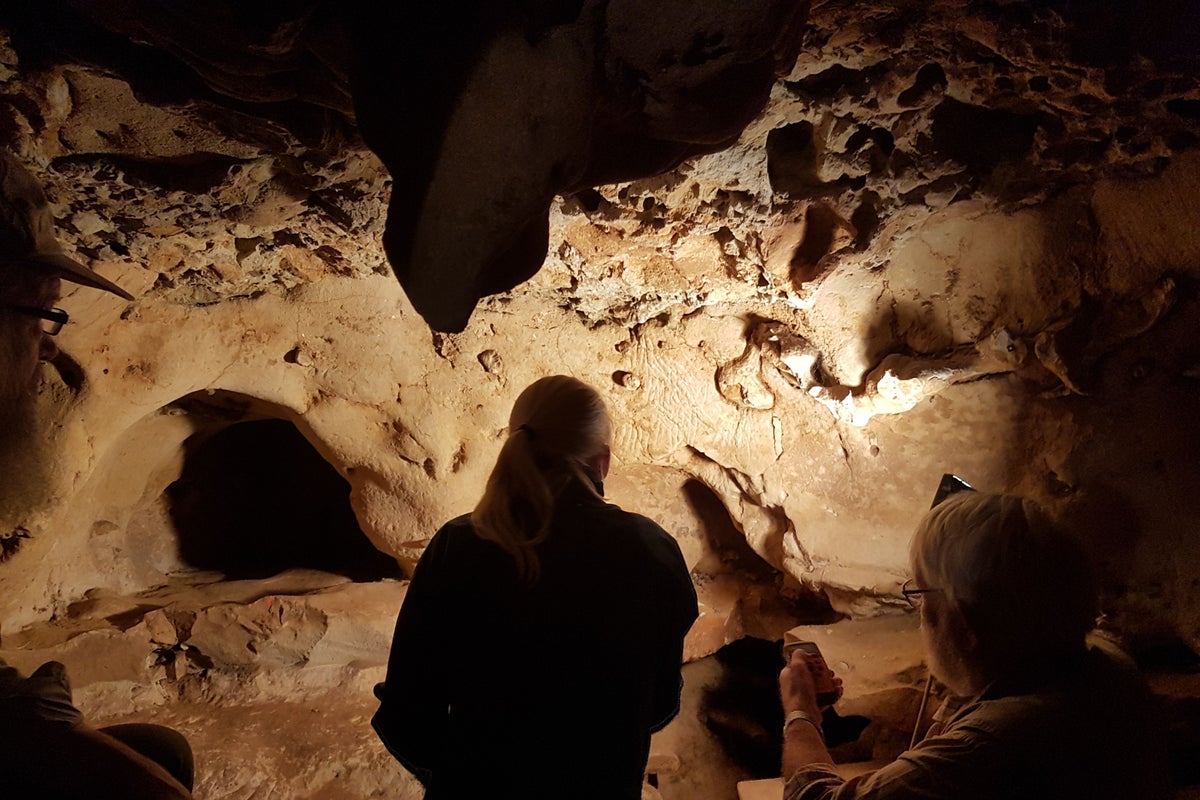Exploring the Ancient Finger Markings of Neanderthals in La Roche-Cotard Cave, France
Key Highlights :

A recent study published in the journal Plos One has revealed that finger markings discovered inside a cave in France are “organised and intentional” and were likely made by Neanderthals more than 57,000 years ago. The La Roche-Cotard cave, located in the Centre-Val de Loire region of northern France, is thought to be the oldest known decorated cave in France and possibly Europe.
Jean-Claude Marquet, of the University of Tours in France, and his colleagues analysed the wall markings, also known as finger flutings, and created 3D models of the engravings to compare them with known human markings. Their analysis revealed that the wall markings were deliberate, based on their shape, spacing, and arrangement, with the types of markings found including circular, dotted, triangular and wavy. The organised and intentional shapes may be symbolic creations, according to the researchers, although it is not possible to establish if they represent symbolic thinking.
The team also dated cave sediments and concluded that La Roche-Cotard cave became closed off by infilling sediment around 57,000 years ago, long before modern humans became established in the region. The markings, along with stone tools found in the cave, provide “strong evidence that these engravings are the work of Neanderthals”, the researchers said.
The findings of the study add to evidence that Neanderthals were “complex and diverse as those of our own ancestors”. The authors said the wall engravings pay “tribute to this lost humanity, whose role in the biological and cultural evolution of humans is undergoing profound revision”. They wrote: “In terms of culture, we now have a better understanding of the plurality of Neanderthal activities, attesting to elaborate and organised social behaviours that show no obvious differences from those of their contemporaries, anatomically modern humans, south of the Mediterranean.”
The study is an important contribution to our knowledge of Neanderthal behaviour, and provides an insight into the complexity and diversity of their culture. It is hoped that further research will continue to shed light on the fascinating story of the Neanderthals and their art.
